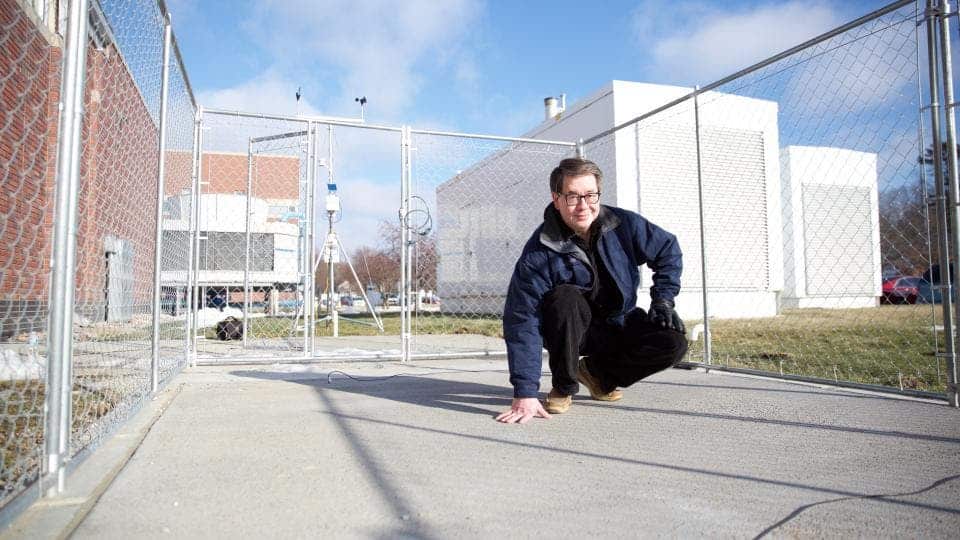An innovative type of concrete has the potential to save lives and millions off taxpayers’ money.
Especially in these frosty times, we all understand how troublesome snow and ice can be, especially on the road. This is where this concrete enters the stage.
The secret ingredient is a bunch of steel shavings and carbon particles that make about 20% of the entire mixture. These add-ins do nothing to weaken the concrete’s structural resistance, but they can conduct electricity, which means they can be heated.
The idea is to incorporate this type of concrete in key places, which have the highest risk of accident.
“De-icing concrete is intended for icy bridges, street intersections, interstate exit ramps, and where accidents are prone to take place,” said Dr. Chris Tuan, a professor of civil engineering at the university who designed the material.

Chris Tuan, professor of civil engineering at the University of Nebraska-Lincoln, stands on a slab of conductive concrete that can heat itself through electricity.
Of course, this would make the material much more expensive than regular concrete. A cubic yard of this material costs about $300, compared to $120 per cubic yard of regular concrete. However, in the long run, this might actually save money, because de-icing chemicals are hugely expensive themselves. Furthermore, salt, which is most commonly used in de-icing erodes concrete, can cause holes, rusts cars and has a significant detrimental effect on both the plants and the animals in the area. All these sum up at several billion dollars per year.
There’s also another hidden advantage – if we electrify parts of roads, then it could become much easier to power up electric vehicles. Also, by replacing the limestone and sand typically used in concrete with a mineral called magnetite, Tuan has shown that the mixture can also shield against electromagnetic waves, protecting against unwanted intrusions.
“We invite parties that are interested in the technology to go in there and try to use their cell phones,” said Tuan, who has patented his design through NUtech Ventures. “And they always receive a no-service message.”
But the main idea remains reducing the risk of accidents and saving lives. According to the US Road Weather Management Program, there were over 500,000 crashes in the past 10 years caused by snowy or frozen concrete, resulting in 2000 fatalities. This means that 200 lives a year could be saved with this pavement.
The technology itself is not new; electrified concrete has been used on a 150-foot bridge near Lincoln, Nebraska. The bridge was inlaid with 52 slabs of de-icing concrete in 2002 and has successfully defrosted itself ever since, without the need for further chemicals. Now, Tuan wants to convince airports to use it, and for good reason.
“To my surprise, they don’t want to use it for the runways,” Tuan said in a statement. “What they need is the tarmac around the gated areas cleared, because they have so many carts to unload — luggage service, food service, trash service, fuel service — that all need to get into those areas … They said that if we can heat that kind of tarmac, then there would be (far fewer) weather-related delays.”
In the meantime, he’s enjoying the benefits of this technology himself.
“I have a patio in my backyard that is made of conductive concrete,” he said with a laugh. “So I’m practicing what I preach.”










